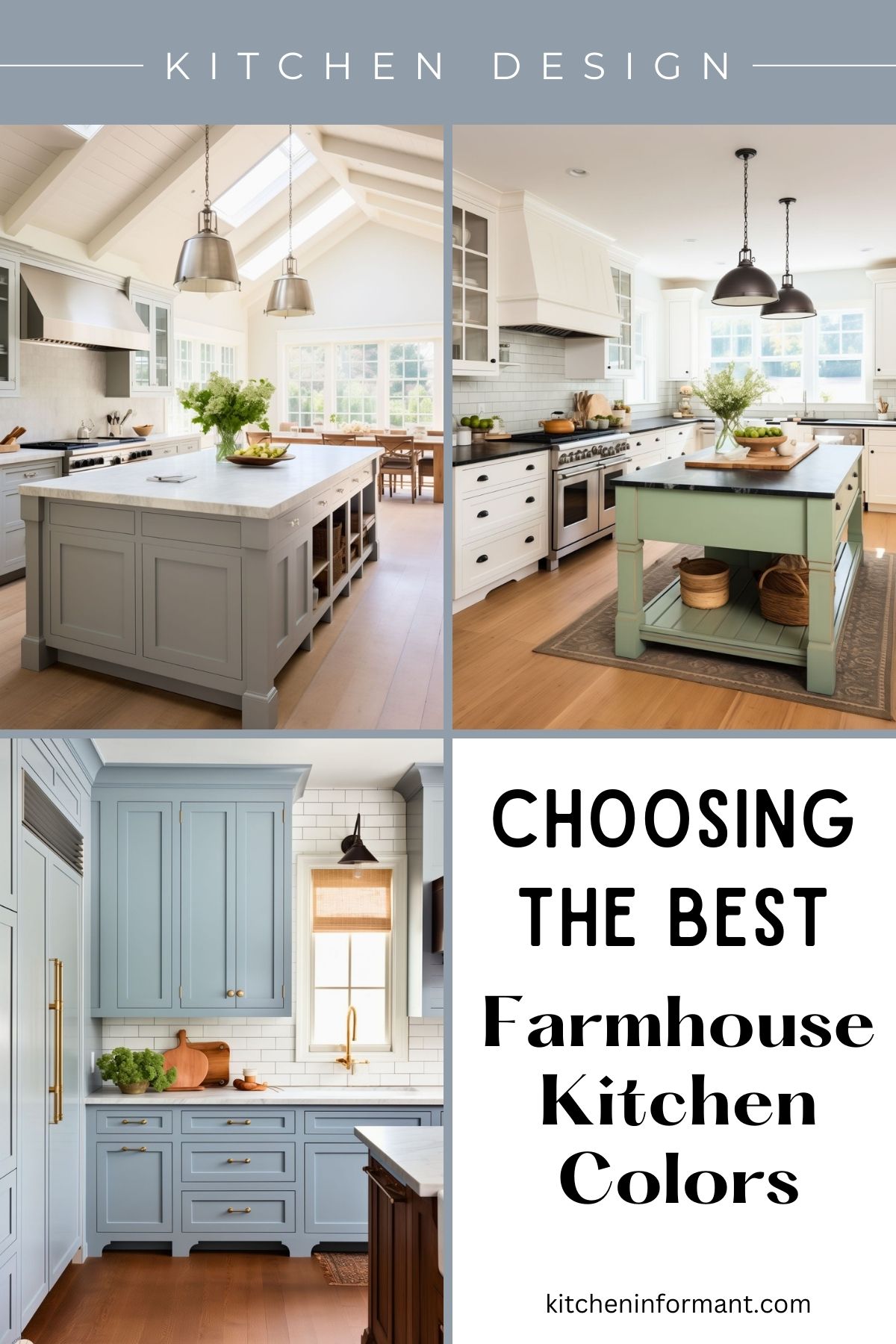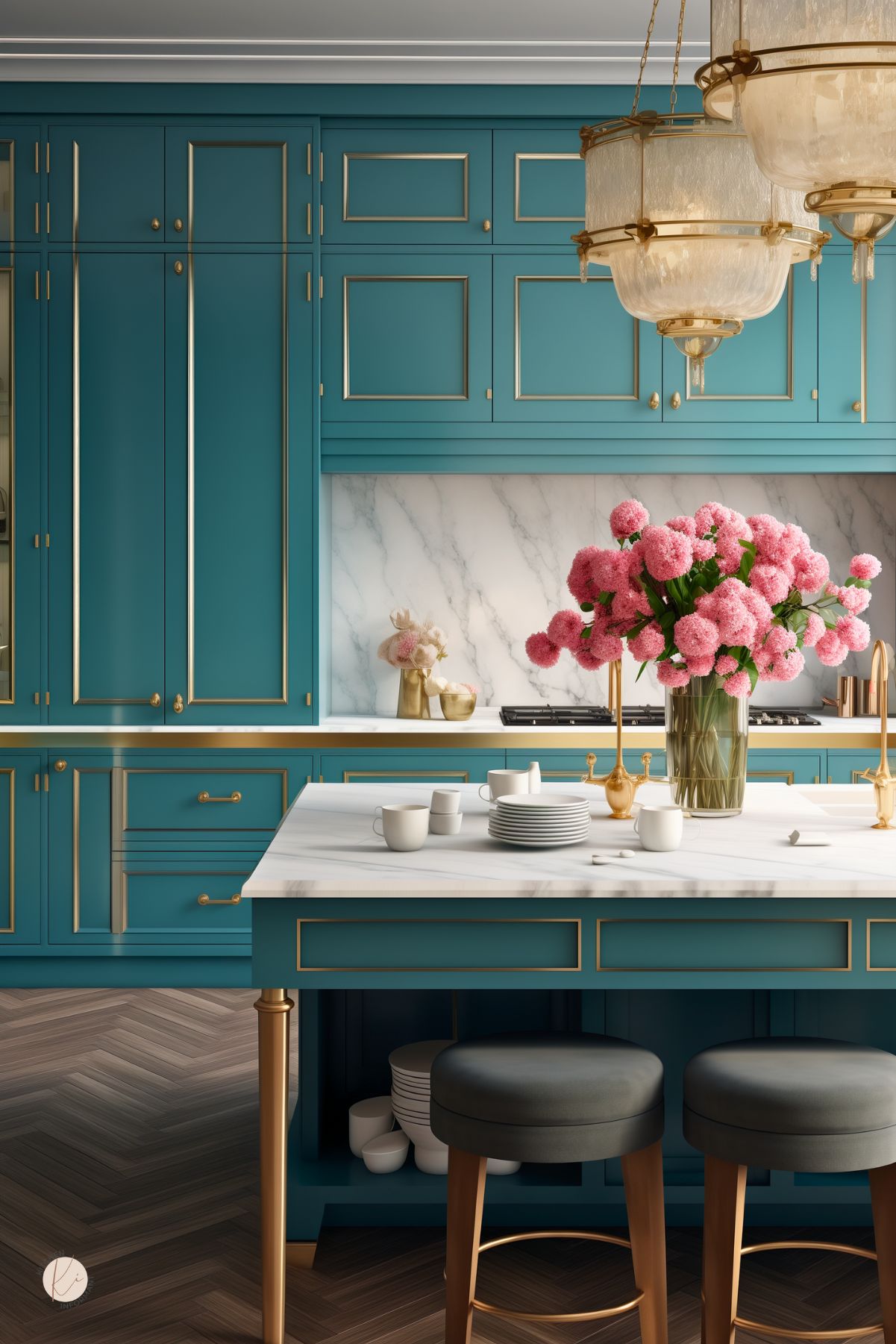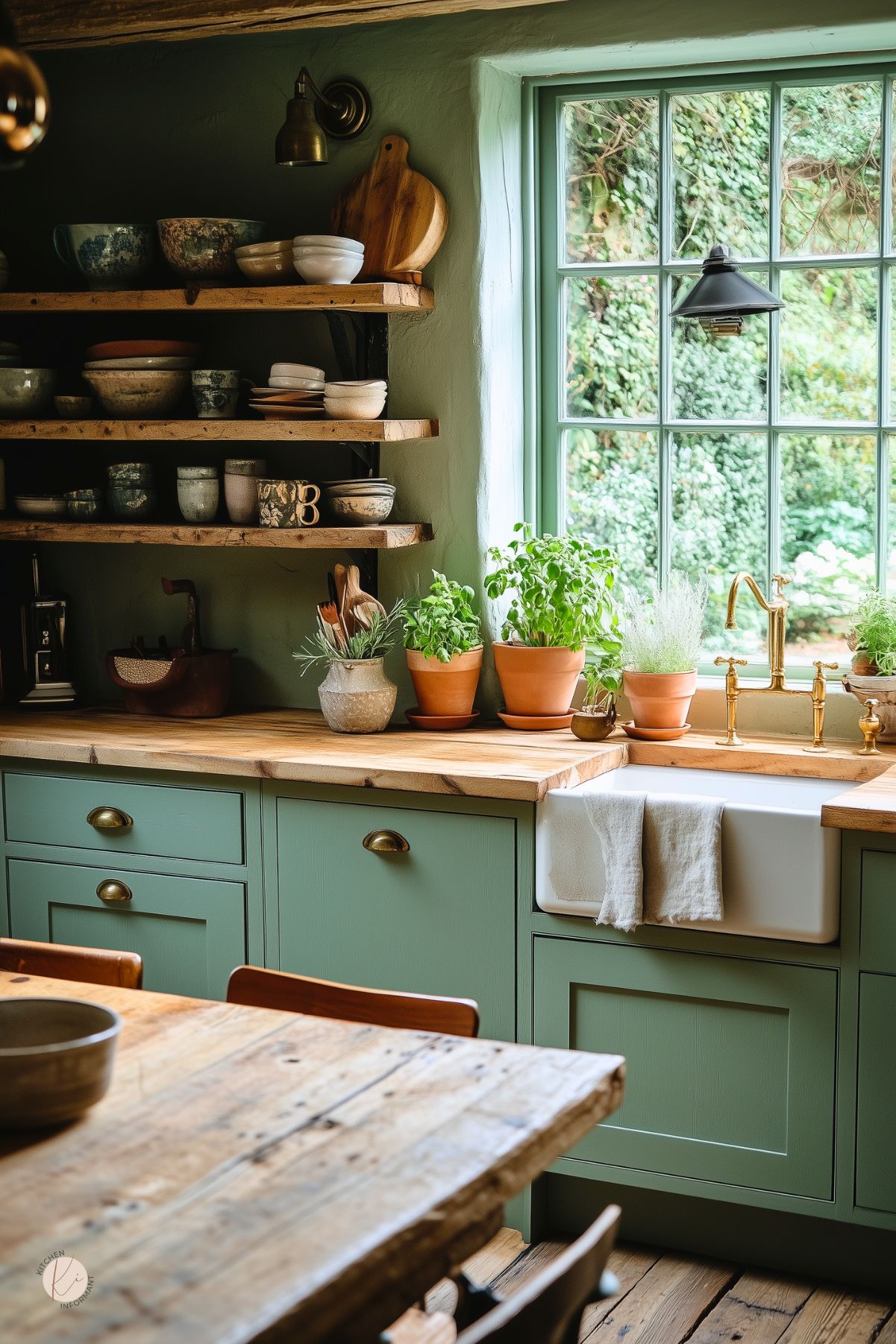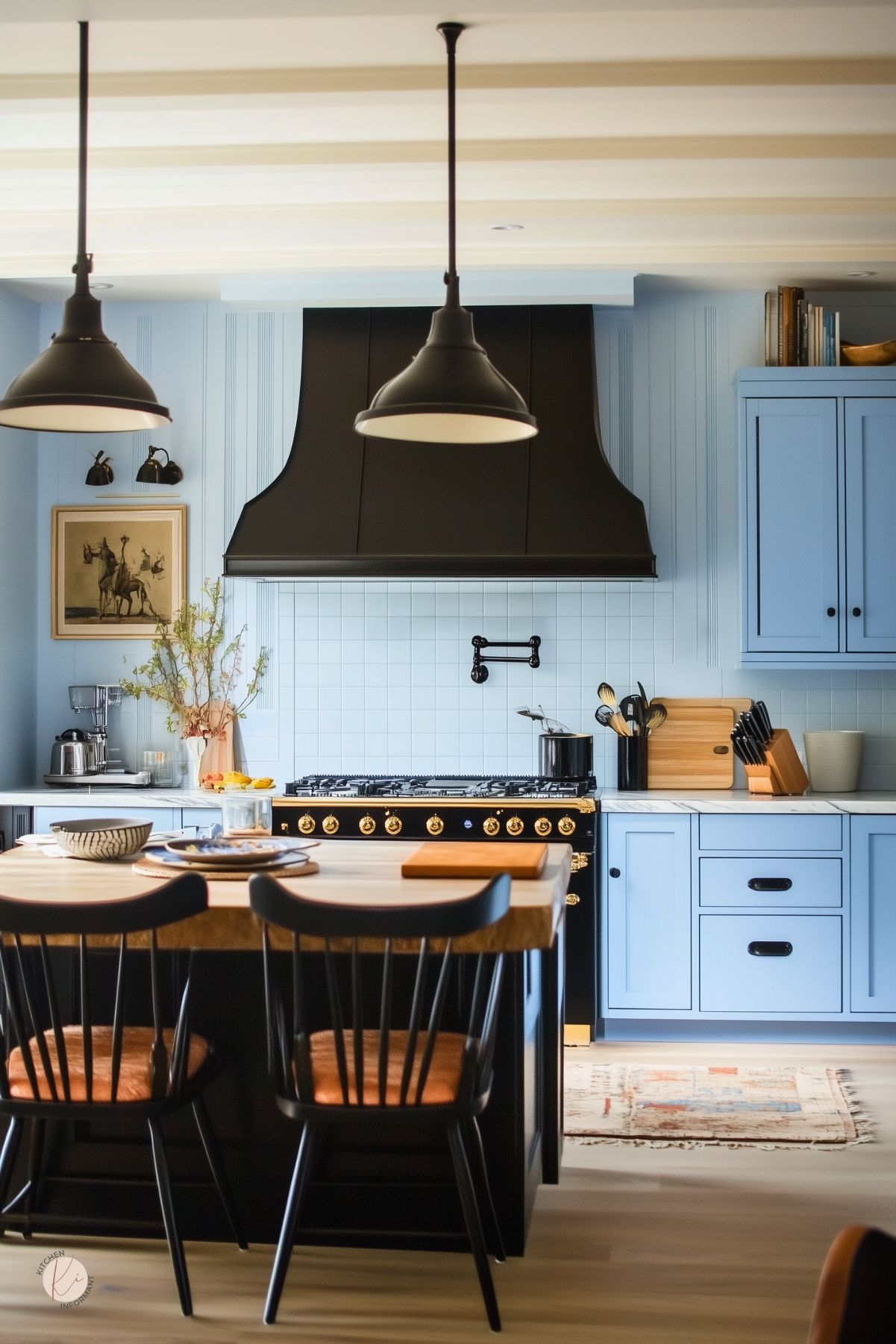Farmhouse kitchens are a popular design trend that has gained momentum in recent years.
The farmhouse style is characterized by its warm and welcoming atmosphere, which is achieved through the use of natural materials, rustic finishes, and earthy colors.
The kitchen is the heart of the home, and the farmhouse style is perfect for creating a cozy and inviting space where family and friends can gather.
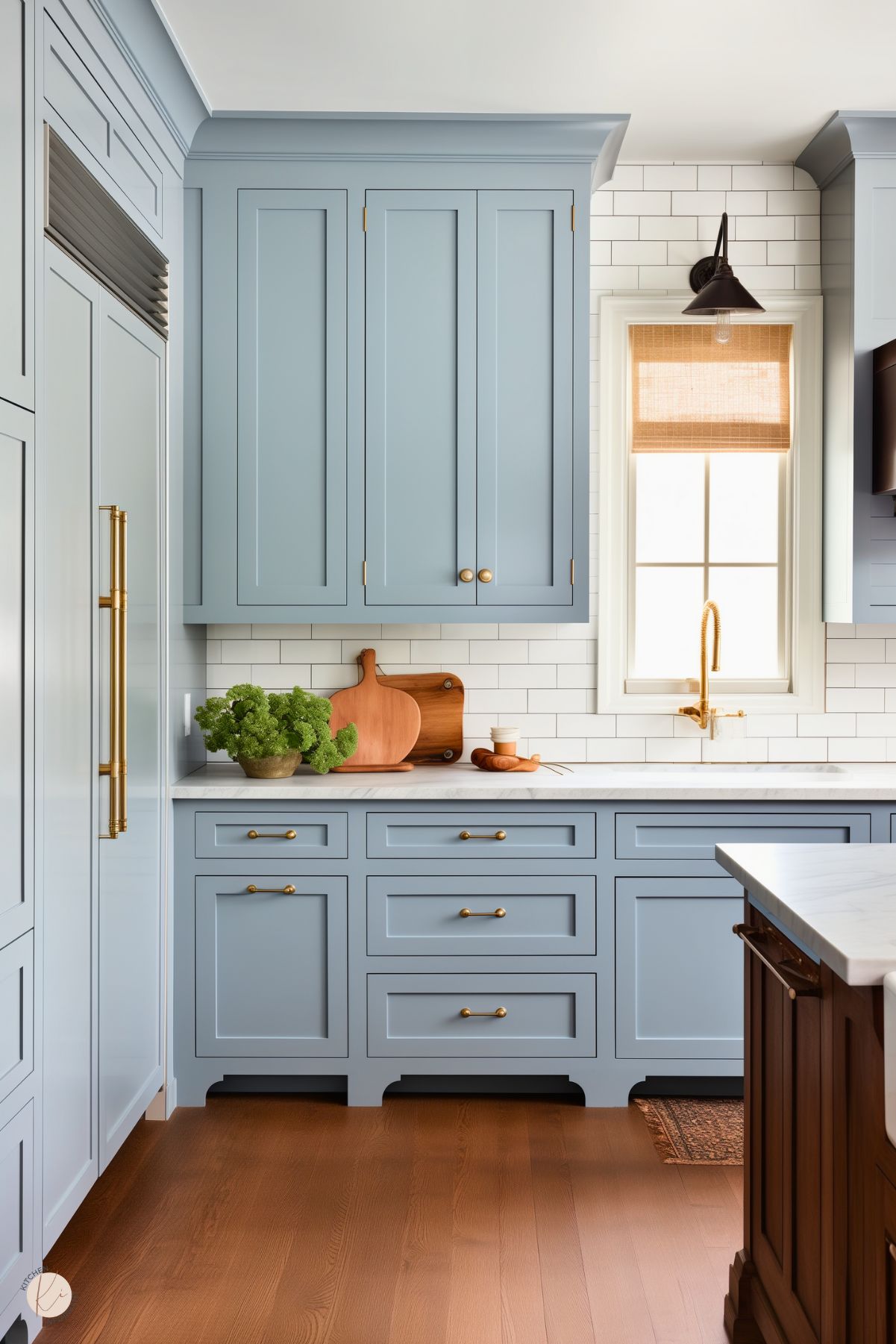
One of the key elements of a farmhouse kitchen is the color scheme. Neutral colors such as whites, grays, and beiges are the foundation of farmhouse kitchen colors. These colors provide a clean and timeless look that can be easily paired with other design elements.
Picking the right neutral paint color is an essential first step to achieving the perfect farmhouse style. This neutral will act as the base color in your space, covering either the cabinetry, walls, or both.
When it comes to farmhouse kitchen colors, there are a variety of options to choose from. From crisp white and soft green pastels to muted blues and warm browns, the possibilities are endless.
The key is to choose colors that complement each other and create a cohesive look. By using a combination of neutral and earthy tones, you can create a space that is both stylish and comfortable.
The Essence of Farmhouse Kitchen Colors
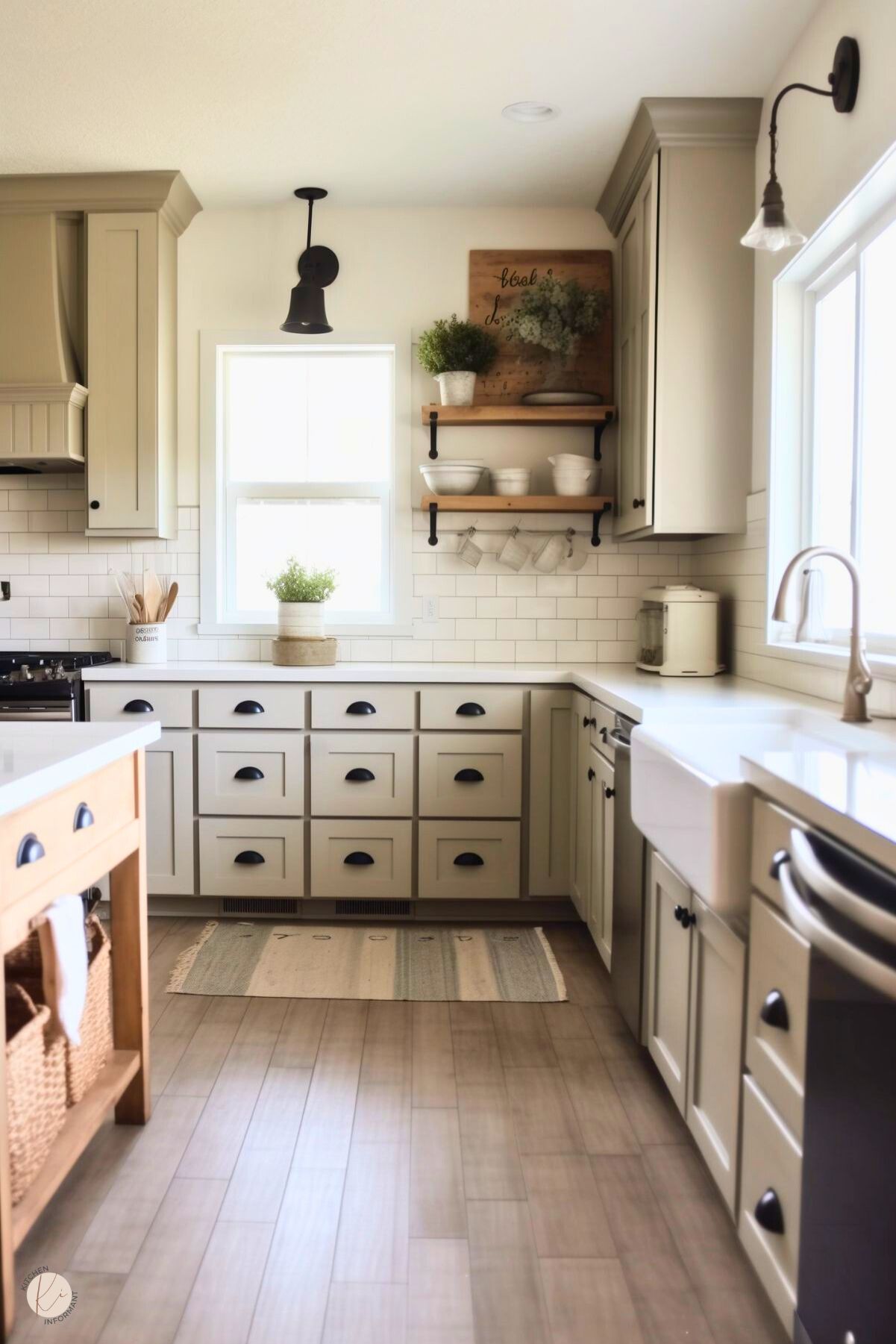
Farmhouse kitchen colors are all about creating a warm, inviting, and cozy atmosphere that captures the essence of a tranquil country life. The right color palette can set the tone for your entire kitchen and create a space that is both functional and beautiful.
In this section, we will explore the foundations of farmhouse kitchen color palettes and the influence of natural light on color selection.
Color Palette Foundations
The foundation of farmhouse kitchen colors is built on neutral tones such as whites, grays, and beiges. These colors create a calming and versatile backdrop that allows other elements of the kitchen to shine.
Neutral colors are also perfect for creating a timeless look that will never go out of style.
To add some depth to your neutral color palette, consider incorporating natural materials such as wood, stone, or metal.
These materials can add texture and interest to your kitchen while still maintaining a cohesive color scheme.
Another way to add some interest to your color palette is by incorporating pops of color.
Soft pastels such as robin’s egg blue, seafoam green, or pale yellow can add a touch of color without overwhelming the space.
These colors can be incorporated through accessories such as curtains, dishware, or even a colorful backsplash.
Influence of Natural Light
Natural light plays a significant role in the selection of farmhouse kitchen colors. The amount of natural light that enters your kitchen can affect how colors appear.
For example, a north-facing kitchen may receive less natural light, which can make colors appear cooler. In contrast, a south-facing kitchen may receive more natural light, which can make colors appear warmer.
It is essential to consider the orientation of your kitchen when selecting your color palette.
If you have a north-facing kitchen, consider warmer tones such as creamy off-whites or warm grays. In contrast, if you have a south-facing kitchen, consider cooler tones such as soft blues or greens.
Classic Color Combinations
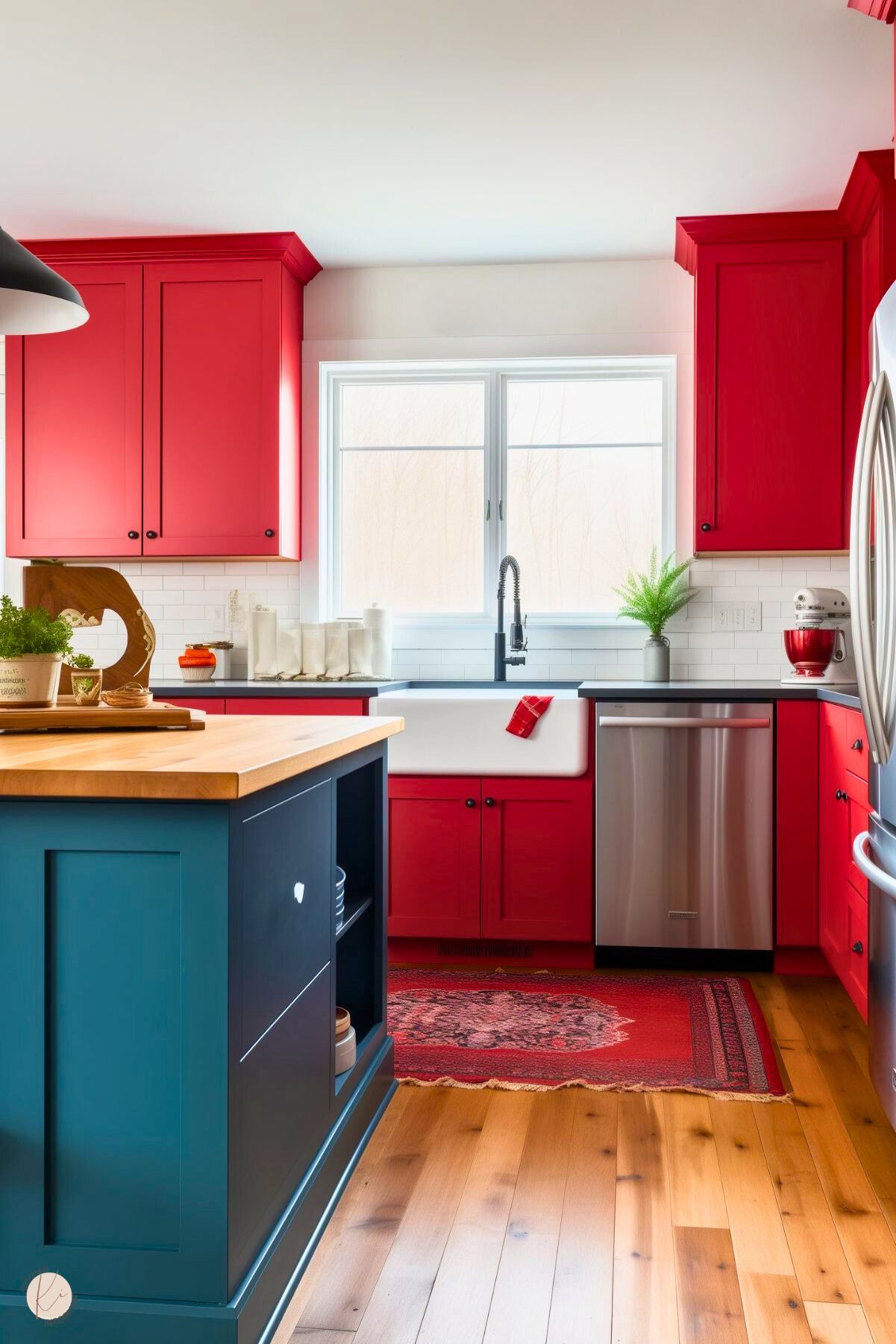
Farmhouse kitchens are known for their classic color combinations that evoke a sense of warmth and comfort.
Here are some of the most popular classic color combinations that can be used to create a timeless farmhouse kitchen.
Warm Neutrals and Earth Tones
Warm neutrals and earth tones are a staple of farmhouse kitchen design. These colors create a cozy and inviting atmosphere that is perfect for gathering with family and friends.
Shades of beige, taupe, brown, and gray are all great choices for creating a warm and welcoming space.
To add a touch of rustic charm, consider incorporating natural wood elements into the design.
This can be achieved through the use of wood countertops, open shelving, or even a reclaimed wood accent wall.
Soft Whites and Pastels
Soft whites and pastels are another classic color combination that is often used in farmhouse kitchens.
These colors create a light and airy feel that is perfect for smaller spaces. Shades of white, cream, and pale blue are all great choices for creating a soft and serene atmosphere.
To add a touch of warmth to the space, consider incorporating natural wood elements or a pop of color through the use of accessories such as curtains or dishware.
Bold Contrasts
For those who prefer a more dramatic look, bold contrasts can be used to create a striking farmhouse kitchen.
Black and white is a classic color combination that can be used to create a timeless look, while shades of navy and white can add a nautical touch.
To balance out the boldness of these colors, consider incorporating natural wood elements or warm metallic accents.
This will help to create a cohesive and inviting space that is both stylish and functional.
Paint Selection Tips
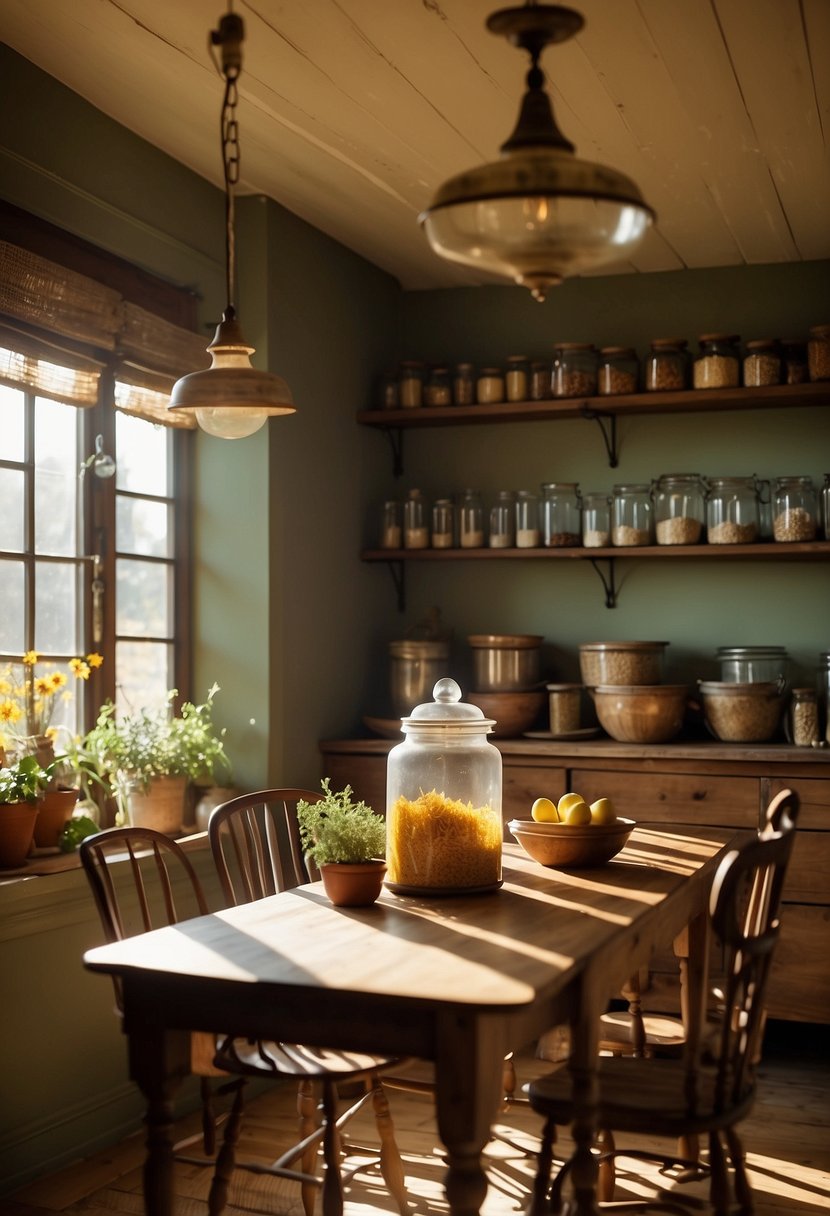
When selecting paint colors for a farmhouse kitchen, there are a few tips to keep in mind to achieve the perfect look.
Choosing the Right Finish
Firstly, it’s important to choose the right finish for the kitchen walls and cabinets.
Glossy finishes are typically not recommended for farmhouse kitchens, as they can appear too modern and sleek. Instead, opt for a matte or eggshell finish for a more rustic and cozy feel.
Longevity and Maintenance
Another factor to consider when selecting paint colors for a farmhouse kitchen is longevity and maintenance.
Since the kitchen is a high traffic area, it’s important to choose paint colors that can withstand wear and tear.
Colors such as white, beige, and gray are great options as they are easy to touch up and can hide minor imperfections.
It’s also important to consider the maintenance required for the chosen paint colors.
For example, darker colors may require more frequent cleaning to avoid showing dirt and grime. On the other hand, lighter colors may show stains more easily and require more frequent touch ups.
Accent Colors and Features
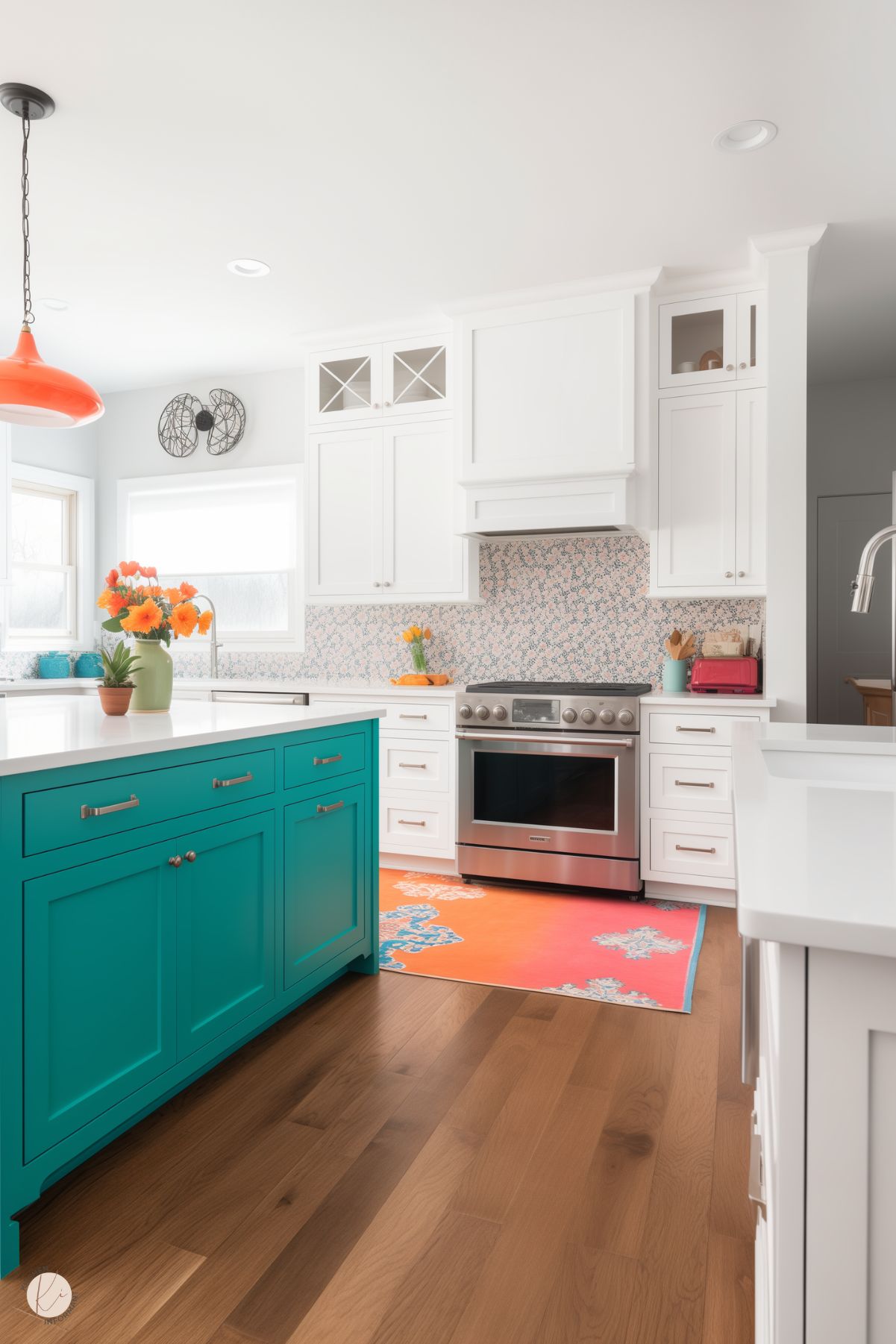
Incorporating Pops of Color
While neutral colors dominate the farmhouse kitchen color palette, incorporating pops of color can add interest and personality to the space.
Consider adding a brightly colored backsplash, colorful dishware, or even a colorful appliance to break up the monotony of neutral tones.
When choosing accent colors, it’s important to consider the overall aesthetic of the kitchen.
For example, if the kitchen has a more rustic feel, warm earth tones like terracotta or mustard yellow would complement the space well.
On the other hand, if the kitchen has a more modern feel, bright pops of color like teal or coral would add a playful touch.
Natural Wood Accents
Natural wood accents are a staple of farmhouse style and can add warmth and texture to the kitchen.
Consider incorporating natural wood elements like open shelving, a wooden island, or even a wooden range hood.
When choosing wood accents, it’s important to consider the type of wood and the finish.
Lighter woods like pine or birch can add a more rustic feel, while darker woods like walnut or cherry can add a more sophisticated touch.
Additionally, the finish of the wood can make a big difference in the overall look of the kitchen.
A distressed finish can add a more rustic feel, while a smooth finish can add a more modern touch.
Cabinetry and Countertops
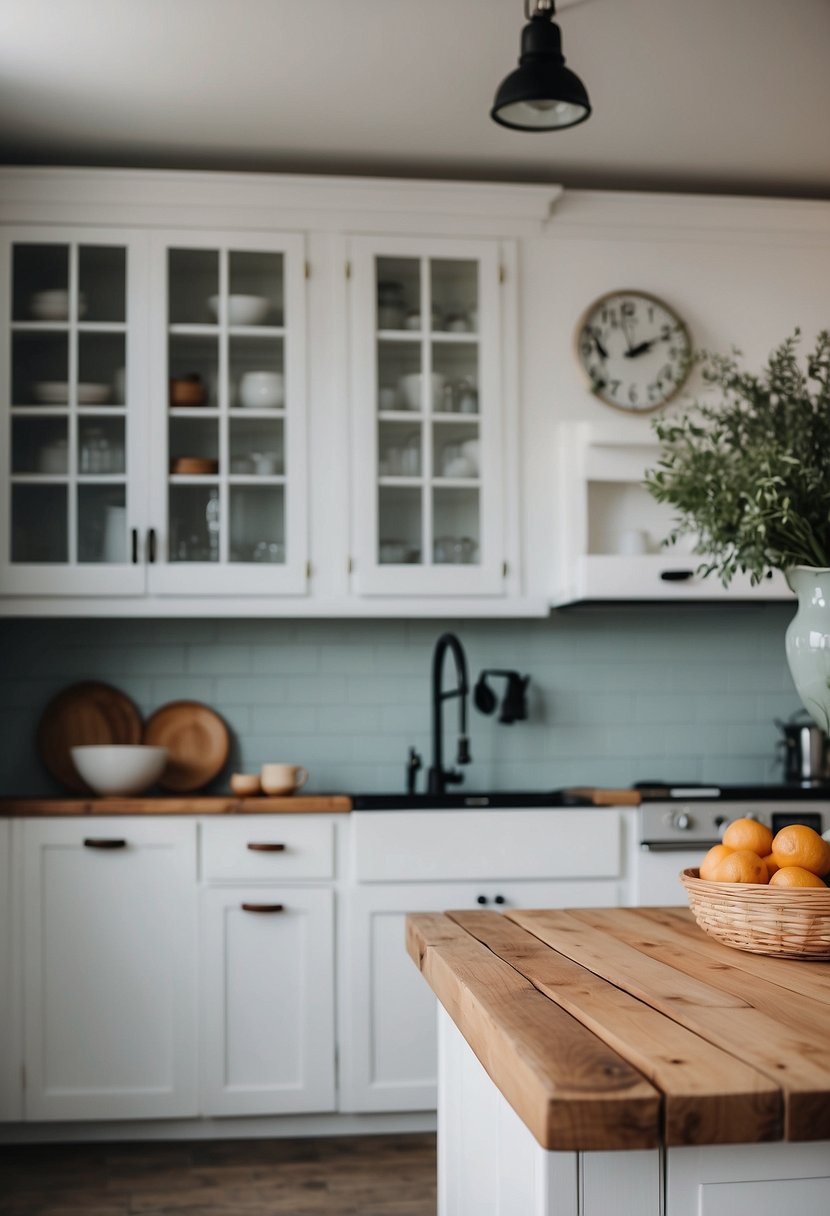
Cabinet Color Trends
When it comes to farmhouse kitchen cabinets, white is a classic choice that never goes out of style. However, there are other cabinet color trends that can add a touch of personality and charm to your kitchen.
Mint green is a refreshing and light color that works well with a variety of other colors, from white to earthy tones. It creates a relaxed atmosphere that’s perfect for a farmhouse kitchen.
Another trendy color is yellow, which adds a bright and cheery touch to your kitchen. It pairs well with white cabinets and countertops, creating a balanced look that isn’t overdone.
Countertop Color Coordination
When choosing countertops for a farmhouse kitchen, it’s important to coordinate the color with the cabinets.
Wooden countertops are a popular choice for a rustic farmhouse look. They come in a variety of shades, from light to dark, allowing you to choose a color that complements your cabinets.
If you have white cabinets, you can pair them with light-colored wooden countertops to create a bright and airy feel. For darker cabinets, you can choose darker wooden countertops to create a cozy and warm atmosphere.
In addition to wooden countertops, there are other materials to consider, such as marble, granite, and quartz.
Marble countertops are elegant and timeless, but they require more maintenance than other materials.
Granite countertops are durable and come in a variety of colors, making them a versatile choice for any kitchen.
Quartz countertops are low-maintenance and come in a variety of patterns and colors, allowing you to choose a color that complements your cabinets.
Textiles and Decor
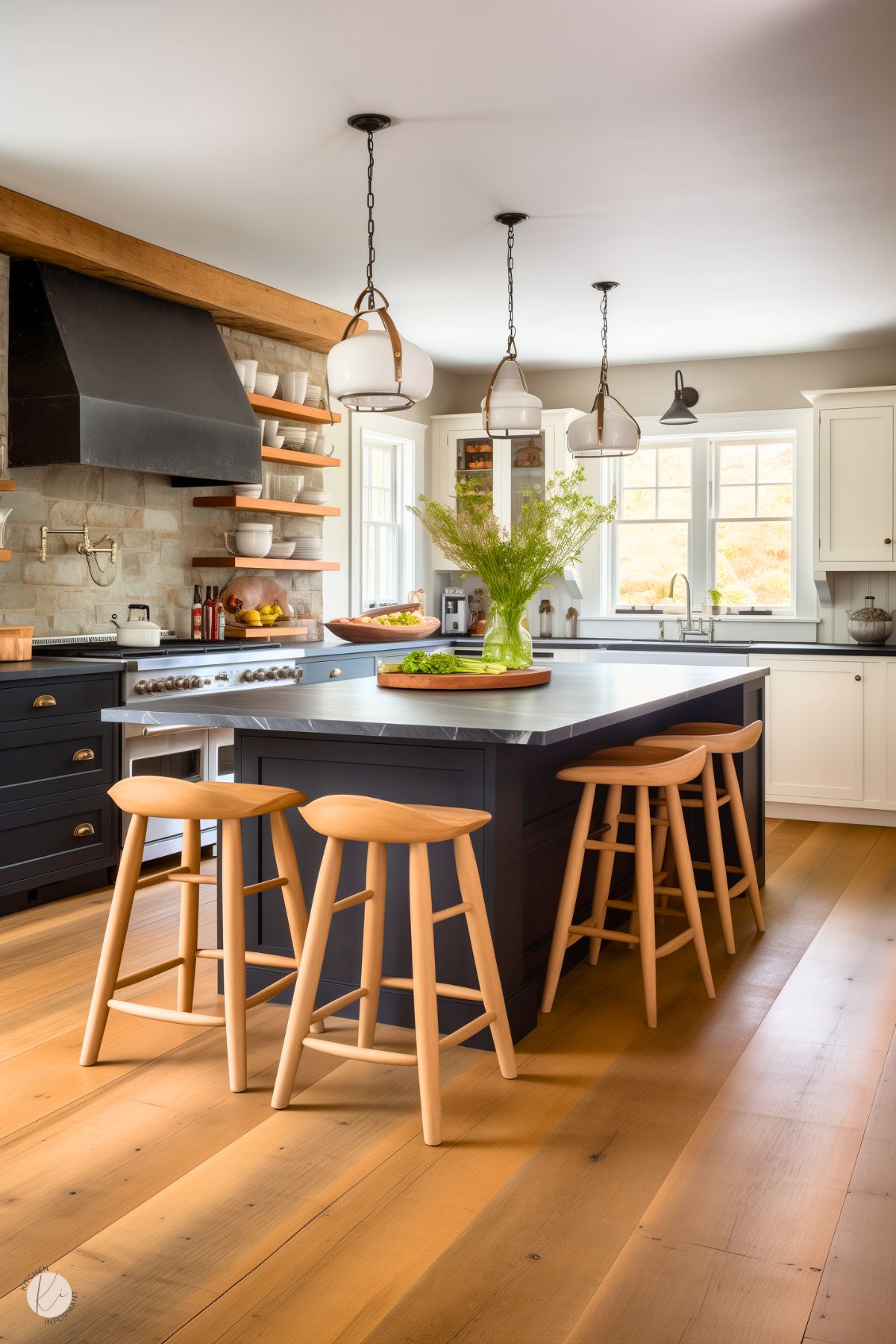
Choosing Textiles for Color and Texture
One of the easiest ways to add color and texture to a farmhouse kitchen is through textiles. From curtains and tablecloths to dish towels and pot holders, textiles can bring a cozy and inviting feel to the space.
When choosing textiles, it’s important to consider the color and texture of the fabric. Neutral colors like white, beige, and gray are classic choices for farmhouse kitchens, but pops of color can also add interest.
For a rustic look, consider using natural fibers like linen and cotton. These fabrics have a beautiful texture and can add warmth to the space.
Plaid and gingham patterns are also popular choices for farmhouse kitchens. These patterns can be used on curtains, table runners, and even dish towels.
Decorative Elements
In addition to textiles, decorative elements can also add character to a farmhouse kitchen. Vintage items like mason jars, milk jugs, and old kitchen tools can be used as decor.
These items can be displayed on open shelves or used as centerpieces on the kitchen table.
Another way to add interest to the space is through artwork and signs. Vintage signs with sayings like “Farm Fresh Eggs” or “Gather” can add a rustic touch to the space.
Artwork with botanical or farm animal themes can also work well in a farmhouse kitchen.
Lighting and Color Perception
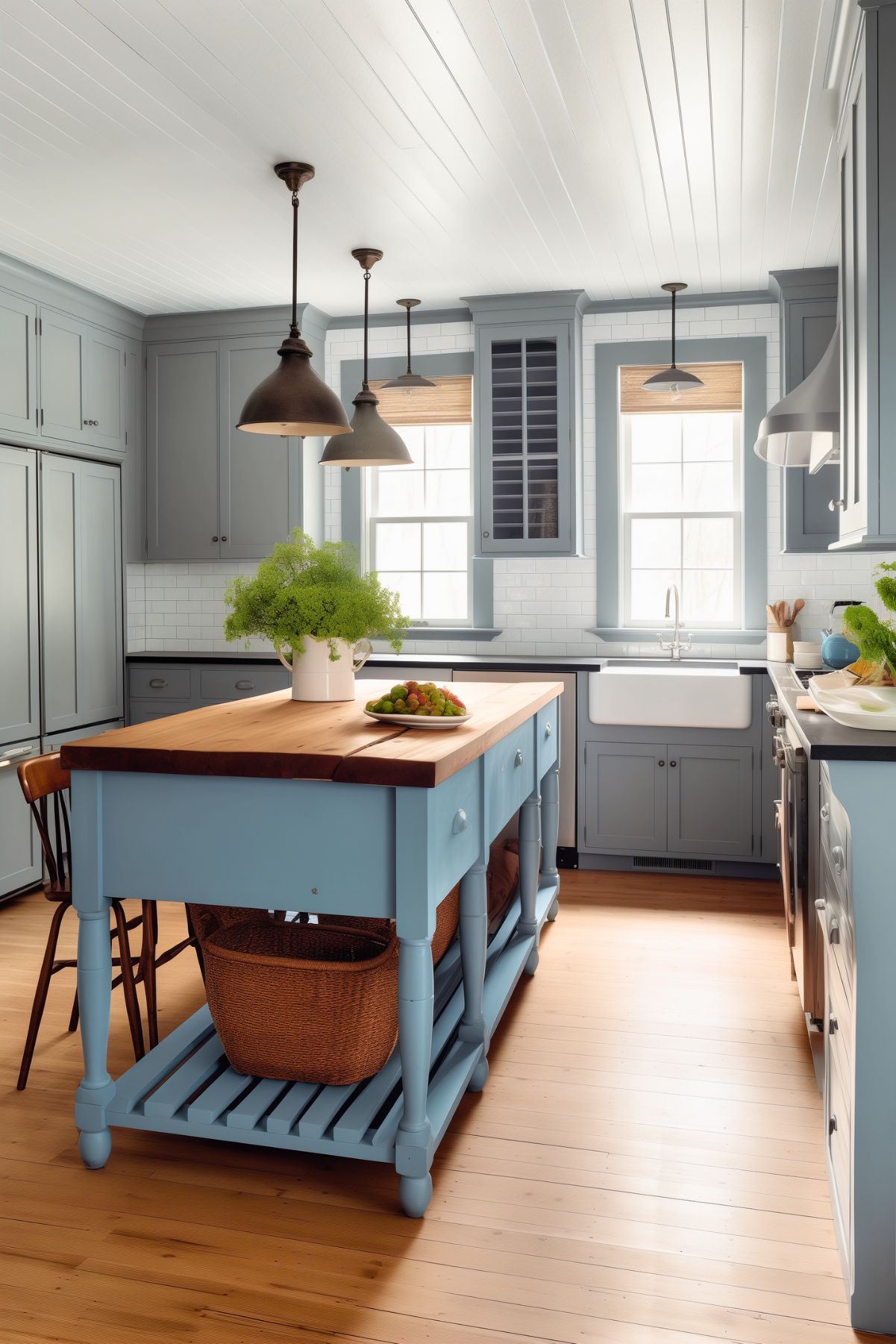
Impact of Lighting on Colors
The right lighting can enhance the beauty of any room, and the kitchen is no exception.
The color of the walls, cabinets, countertops, and even the flooring can look different depending on the lighting in the room.
Natural light, for example, can make colors appear brighter and more vibrant, while artificial light can make them look dull and muted.
It is important to consider the type of lighting in the kitchen when selecting the color scheme.
For example, warm-toned light bulbs can enhance warm colors such as beige, brown, and yellow, while cool-toned light bulbs can make cool colors such as blue, green, and gray look more vibrant.
Selecting Light Fixtures
When selecting light fixtures for a farmhouse kitchen, it is important to consider both the style and function of the fixture.
Pendant lights are a popular choice for over the kitchen island, while recessed lighting can provide general lighting for the entire space.
The size and placement of the light fixtures can also impact the overall look of the kitchen. For example, a large chandelier can make a statement in a farmhouse kitchen with high ceilings.
Smaller fixtures can be used to create a more intimate and cozy atmosphere.
In addition to considering the style and function of the light fixtures, it is also important to select bulbs with the right color temperature.
LED bulbs are a popular choice for their energy efficiency and ability to produce warm or cool-toned light.
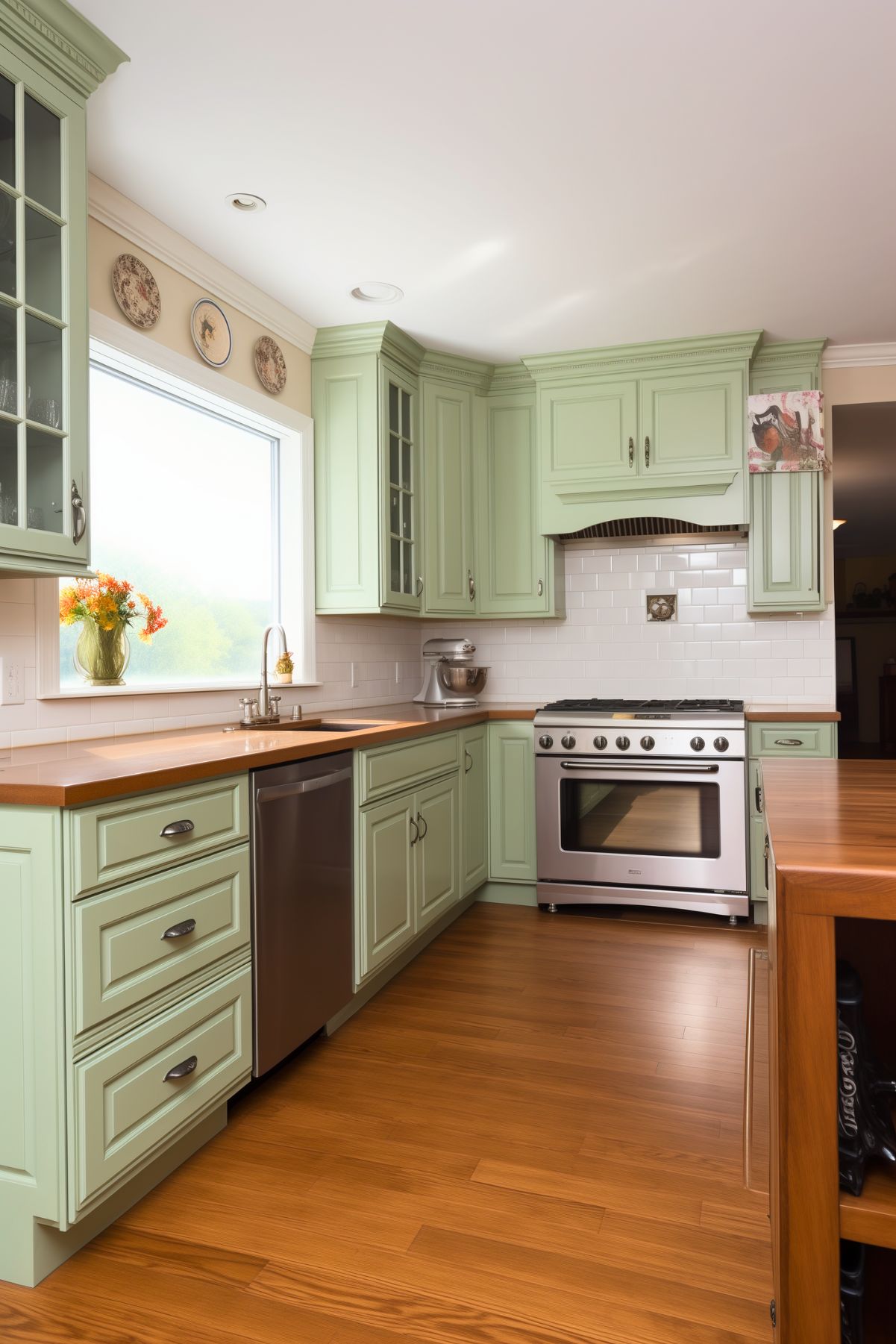
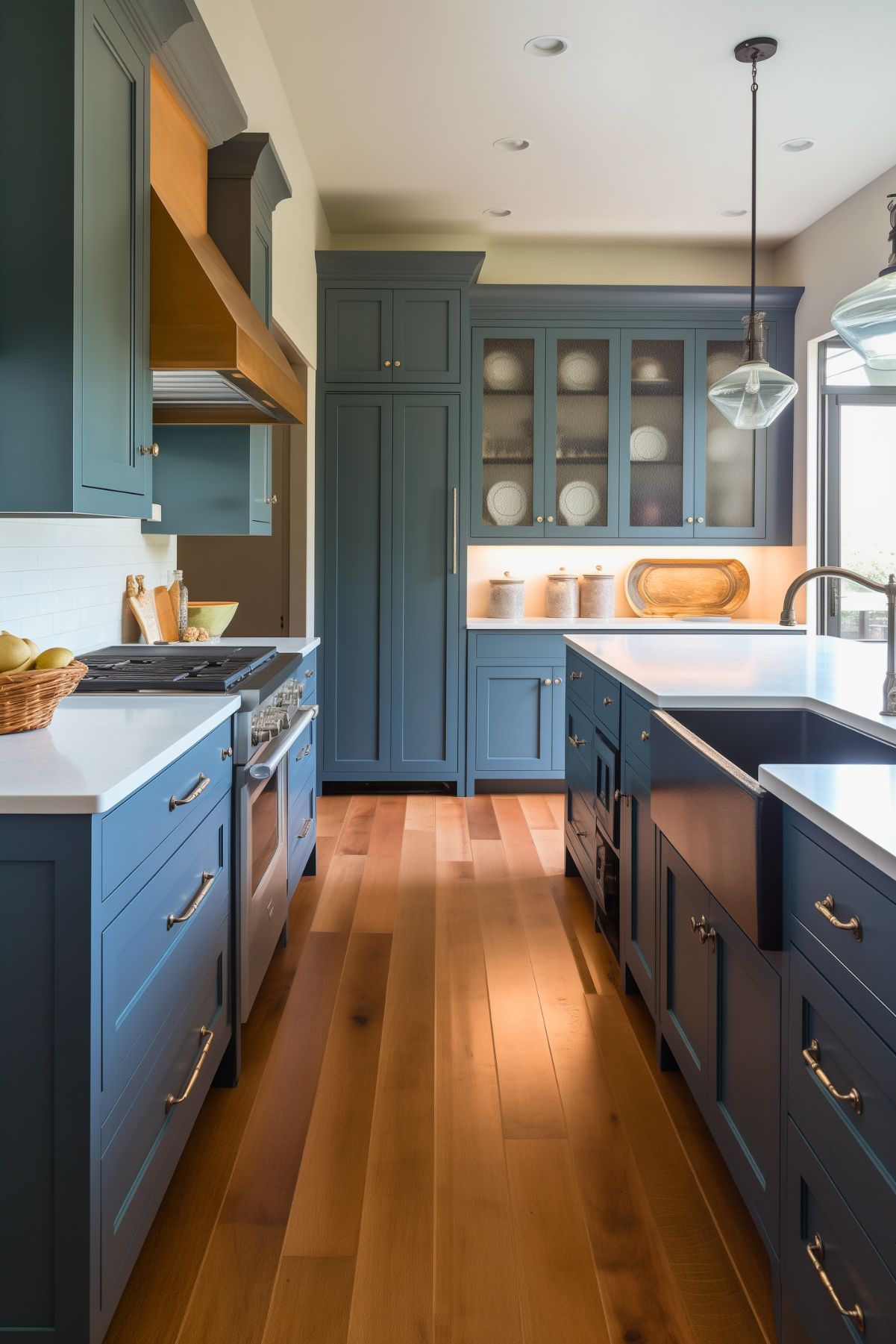
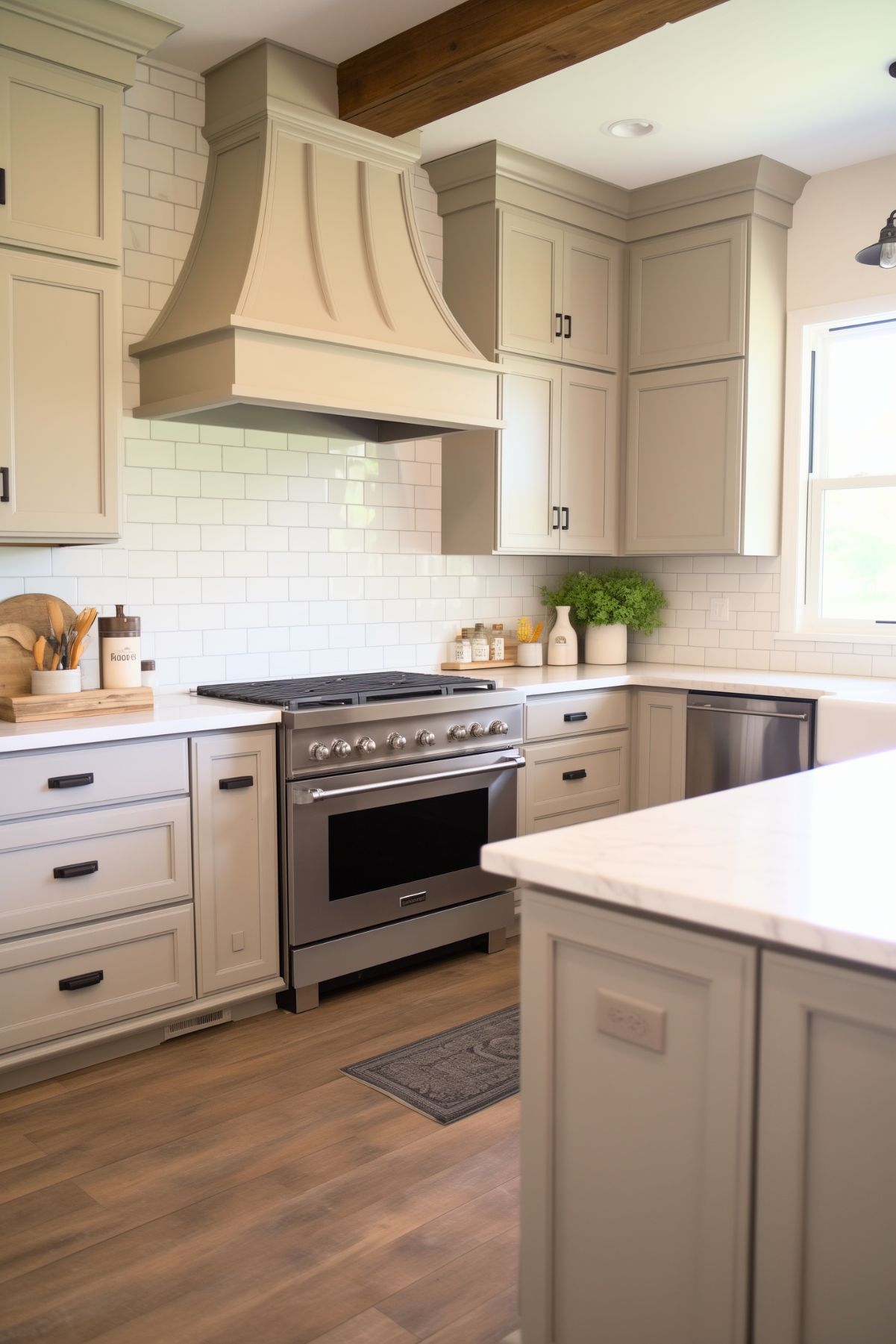
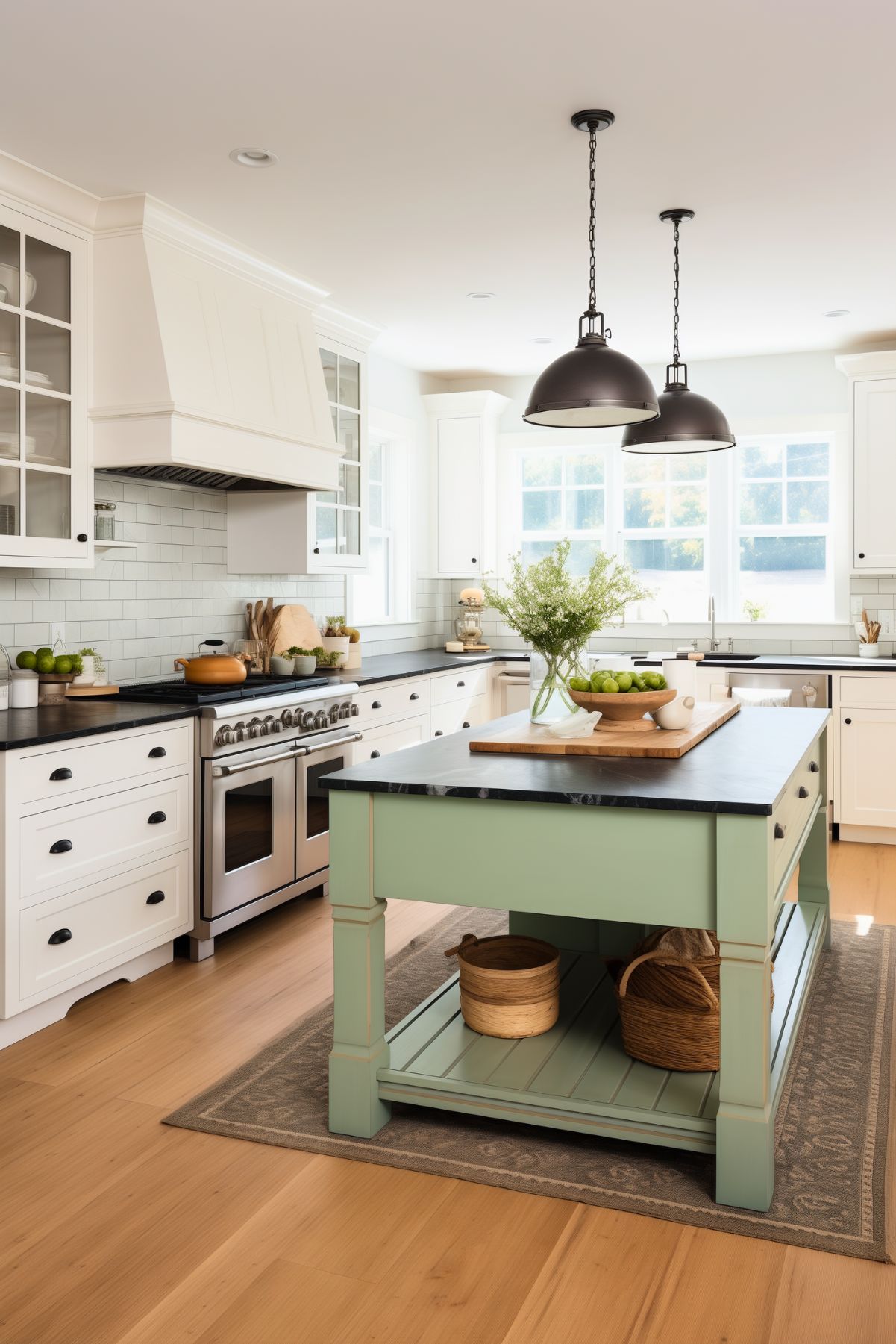
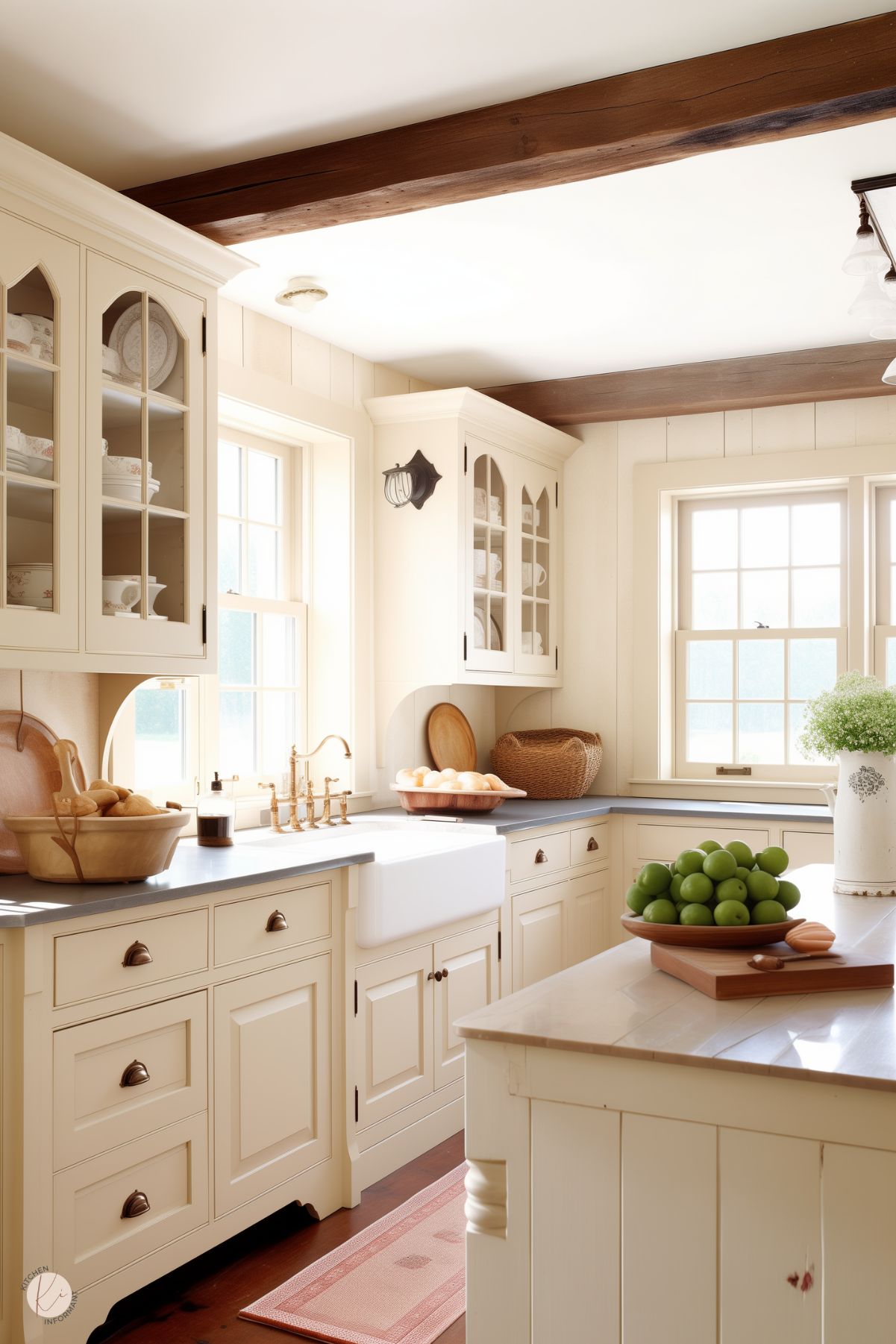
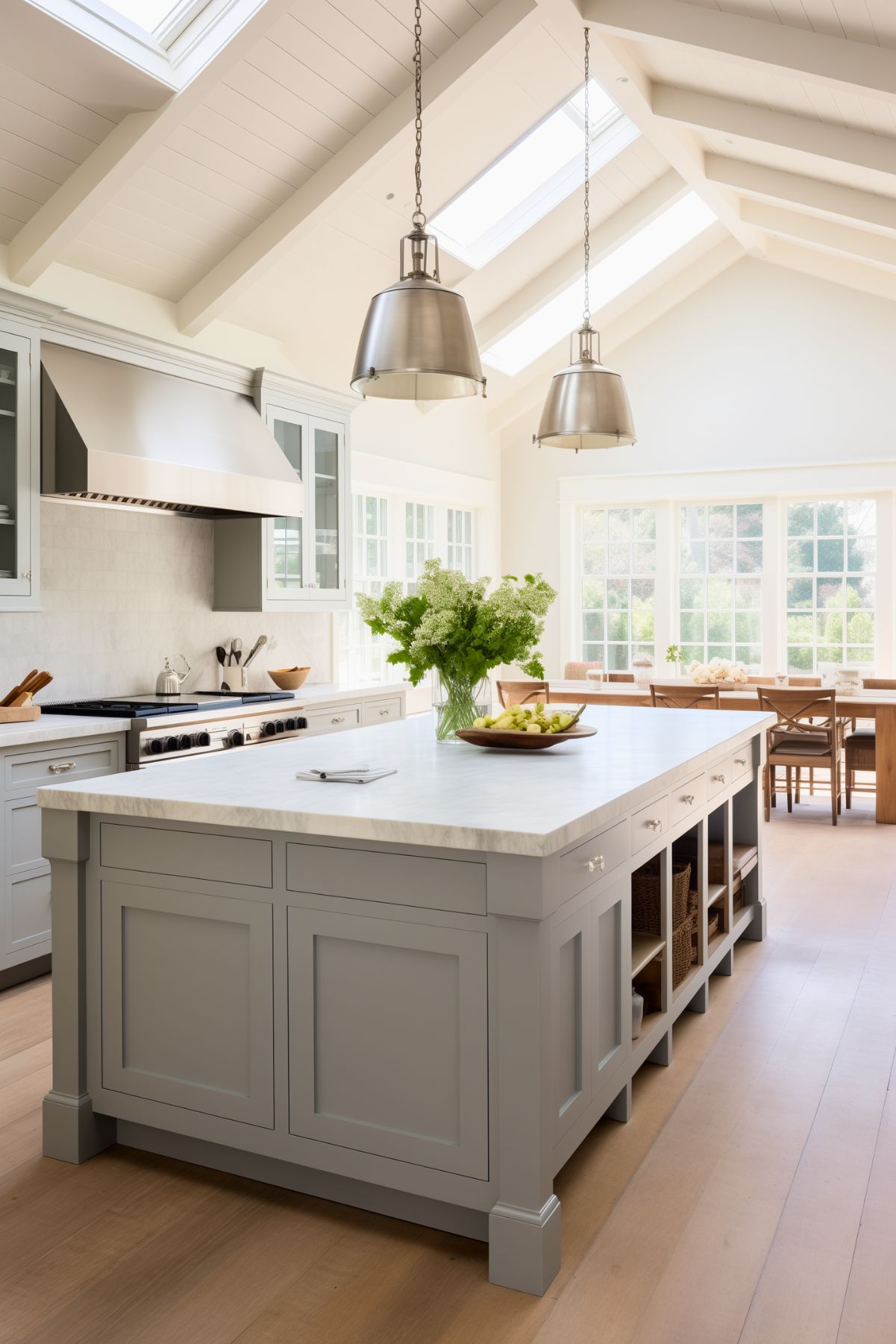
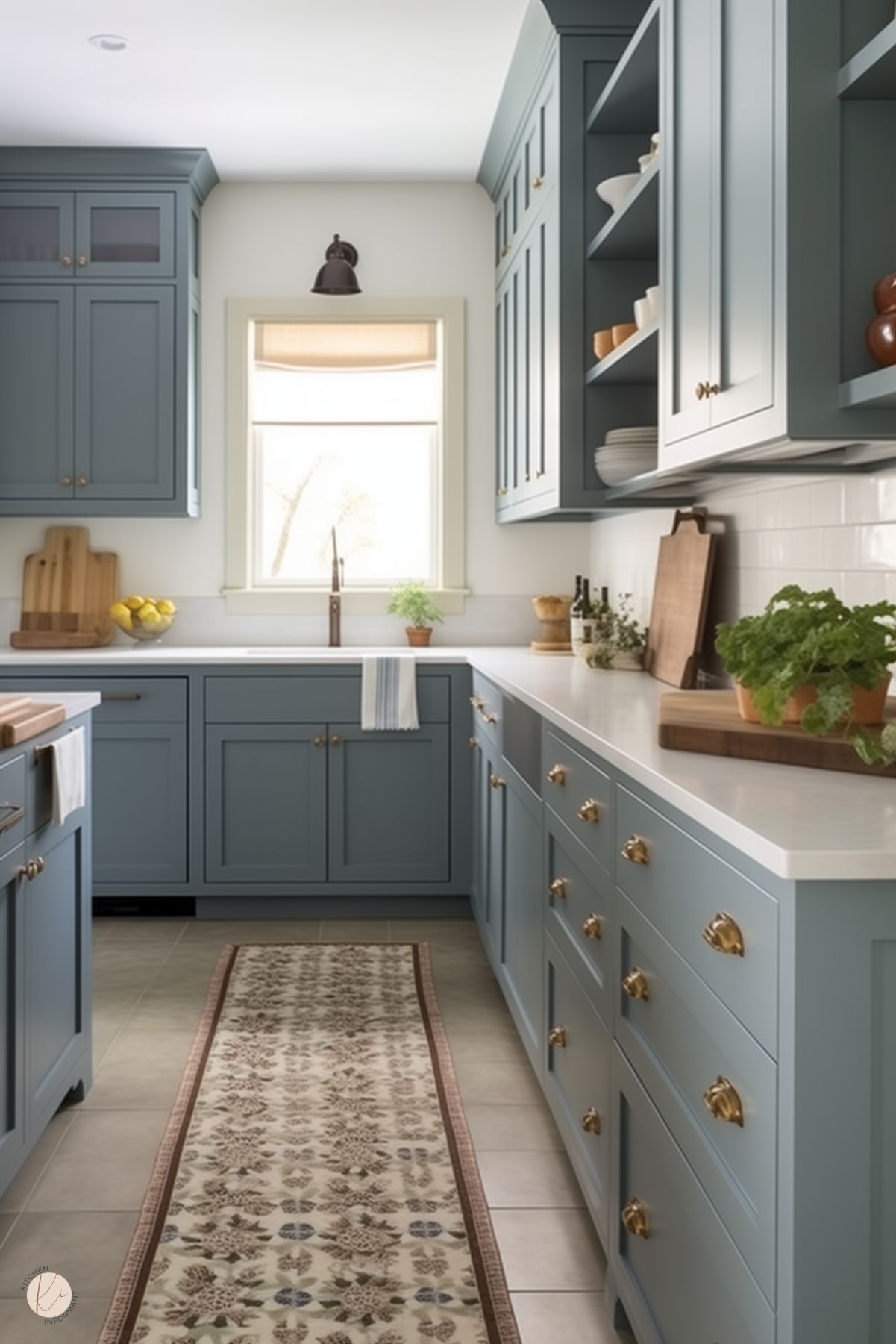
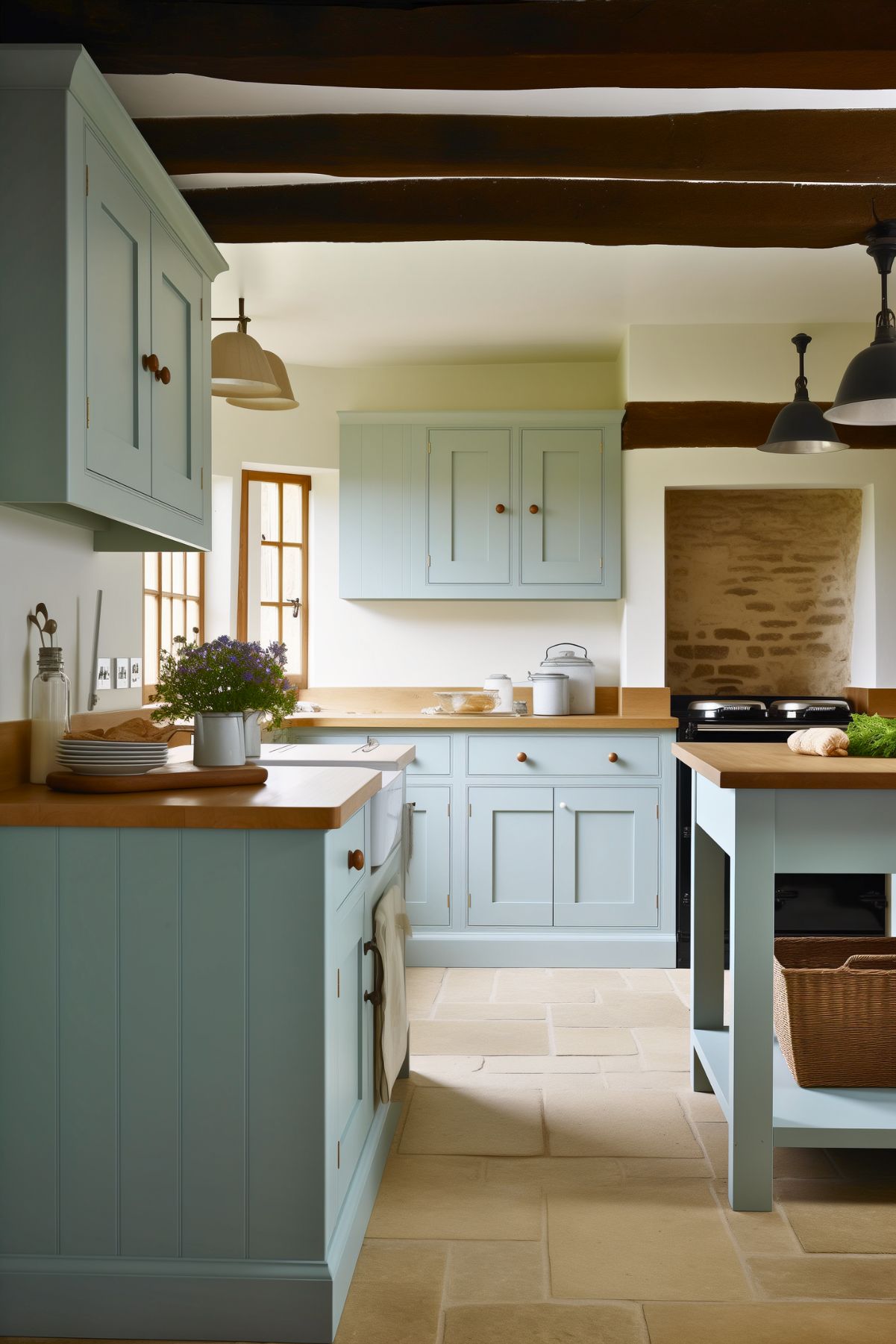
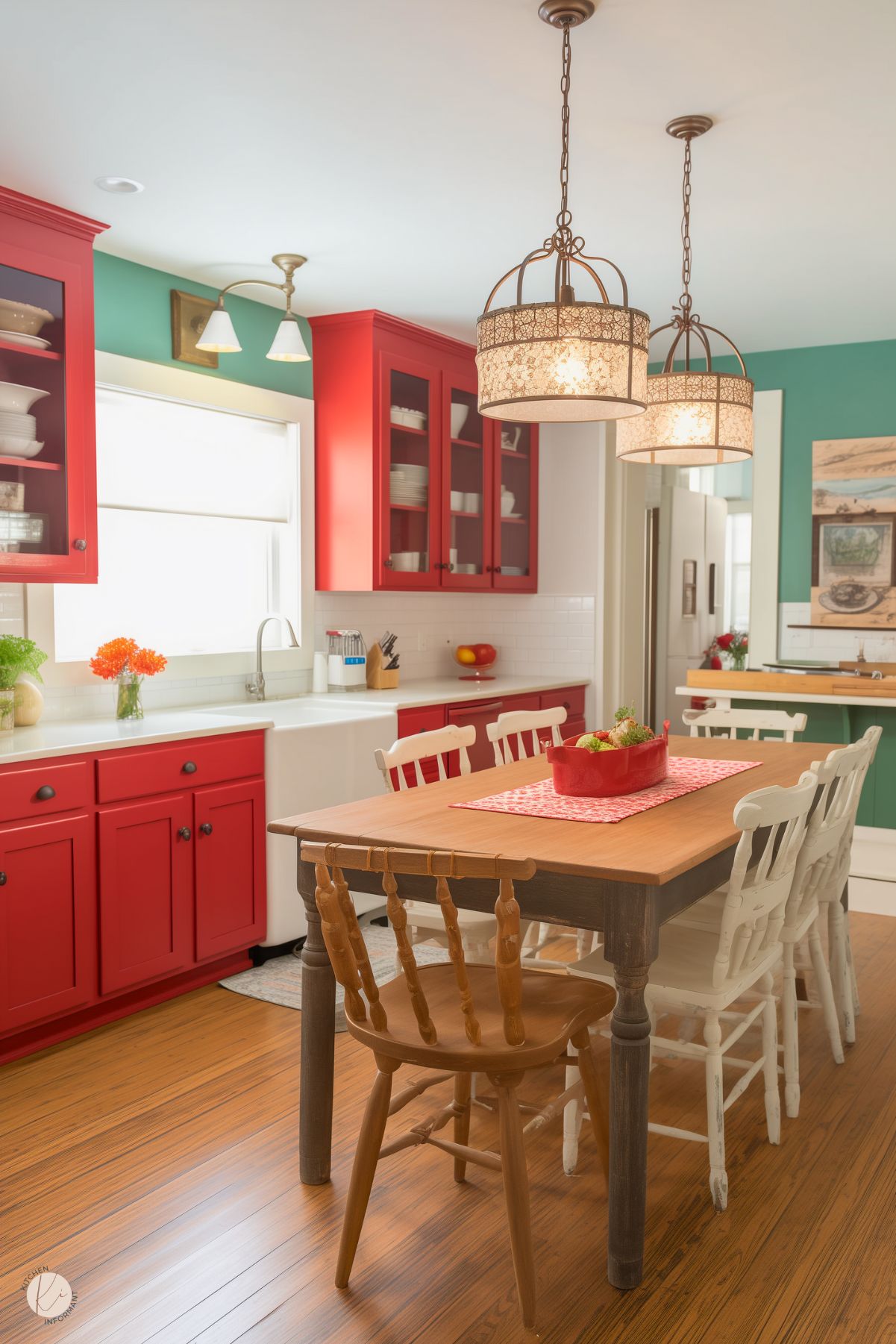
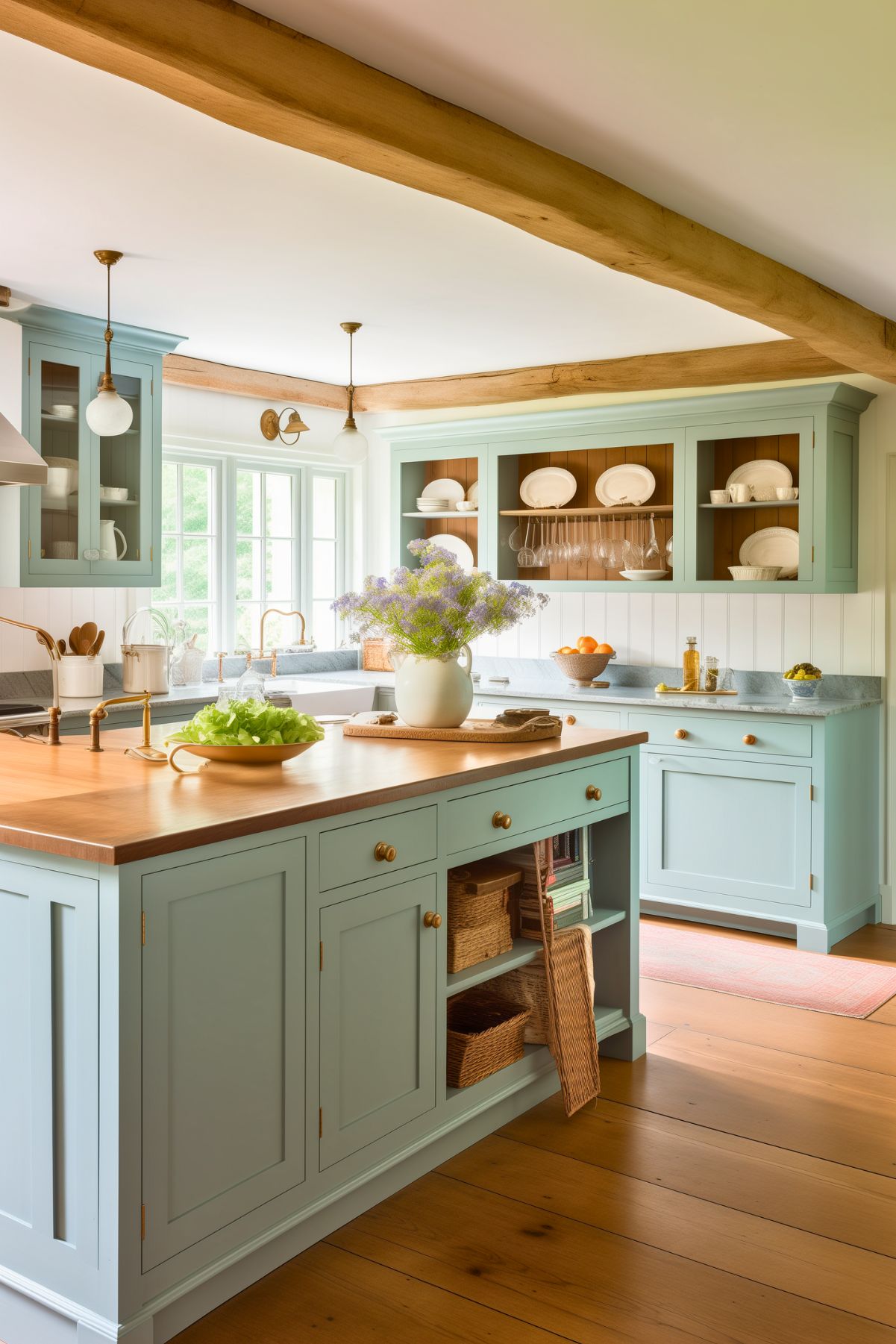
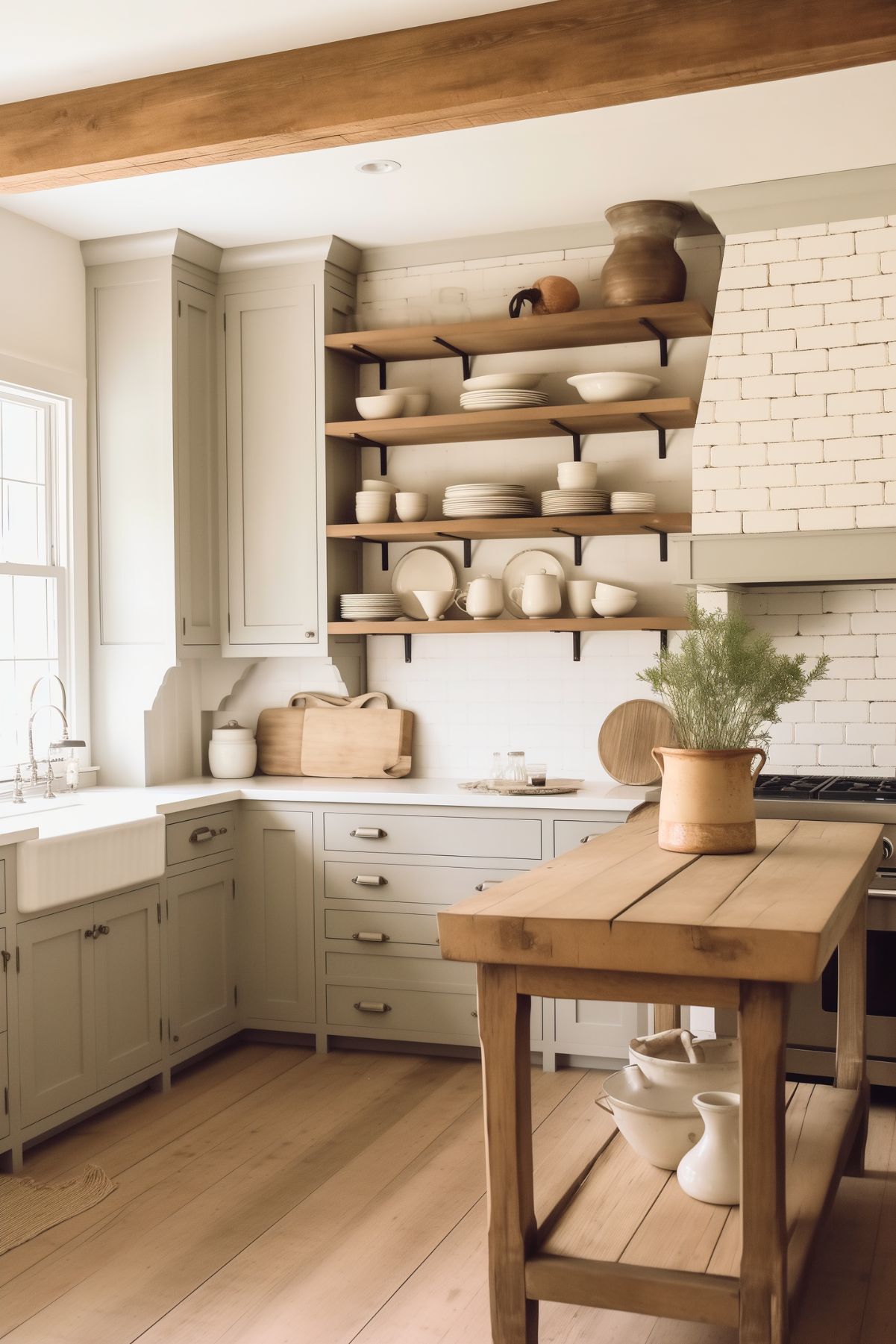
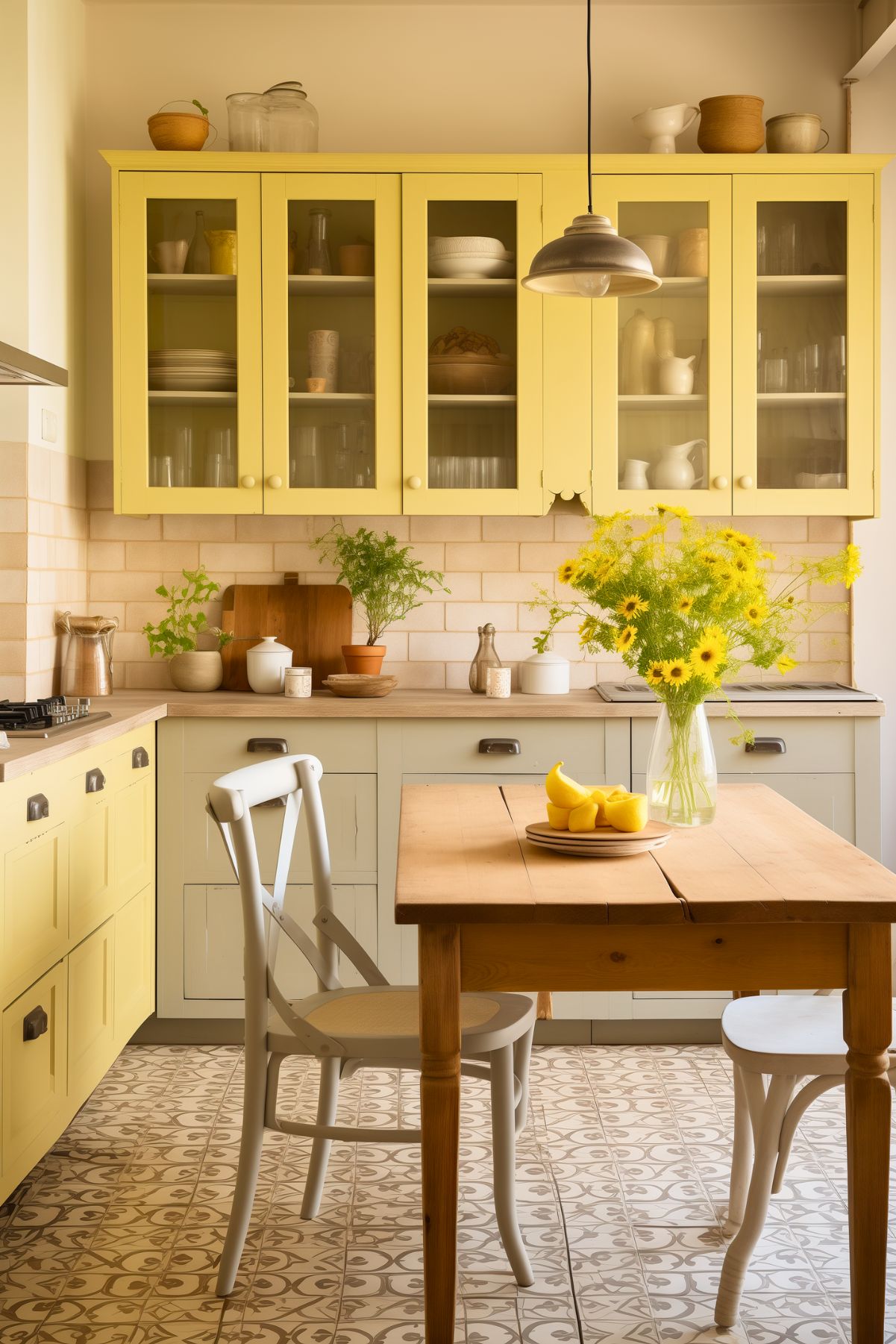
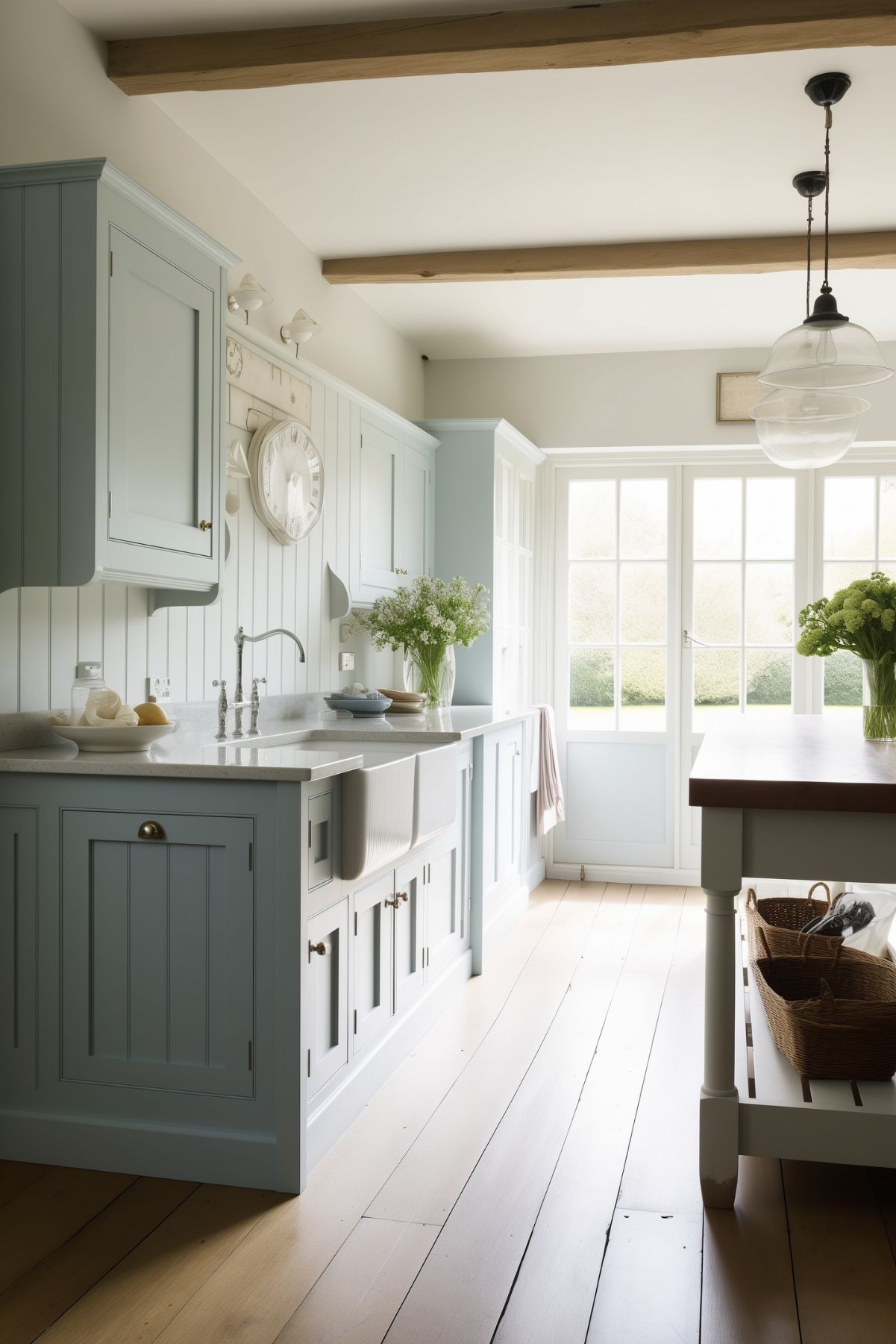
You May Also Like:
